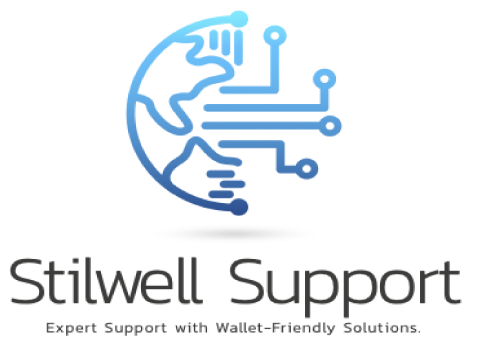Just a brief assessment can safeguard your organization from significant vendor and supply-chain risks. In today’s digital landscape, the dependencies on technology providers can expose you to various threats, including data breaches and service interruptions. By implementing a straightforward, 30-minute vetting process, you can identify potential red flags and make informed decisions about your tech partners. This guide will empower you with the crucial steps to enhance your due diligence and protect your business from unforeseen disruptions.
Key Takeaways:
- Evaluate the financial health and stability of your tech providers to minimize potential disruptions.
- Assess security practices, compliance certifications, and data privacy measures to protect sensitive information.
- Implement a streamlined vetting process to efficiently review and monitor vendor performance and risks.
Red Flags in Vendor Relationships
Identifying red flags in vendor relationships can save your organization from significant headaches. Look for signs that suggest misalignment or instability, which may manifest as communication breakdowns, inconsistent quality, or reluctance to address issues. Trust your instincts; if something feels off, it likely is. By staying vigilant, you can enhance your vendor management strategy and protect your supply chain from unnecessary risk.
Identifying Poor Communication Patterns
Poor communication patterns can severely hinder vendor relationships and project success. Look for delayed responses, a lack of clarity in messaging, or repeated misunderstandings. If your vendor frequently misses updates or doesn’t provide the necessary information, it undermines your trust and confidence. Effective communication is the backbone of a productive partnership, and its absence often indicates deeper systemic issues.
Recognizing Inconsistent Quality Standards
Inconsistent quality standards can derail projects and impact your bottom line. If a vendor fails to meet your quality requirements on a regular basis, that’s a major red flag. Look for discrepancies in delivered products or services compared to agreed specifications, as these inconsistencies can lead to costly reworks or dissatisfied customers.
Establishing clear quality benchmarks is vital to assess vendor performance over time. If your vendor’s quality fluctuates, this instability could stem from inadequate processes, lack of training, or insufficient quality control measures. For example, a tech provider who delivers software that frequently requires updates or bug fixes likely hasn’t met the necessary standards in its development cycles. Regularly audit your vendors’ performance against established criteria to catch these inconsistencies early, ensuring that your partnership remains beneficial and aligned with your business objectives.
The Essential Checklist: Questions to Ask Your Tech Providers
Creating a robust vetting process for tech providers involves asking the right questions that reveal their capabilities, reliability, and alignment with your business needs. Essential inquiries should encompass financial health, compliance with regulations, clarity in service level agreements, and their overall operational practices. Each question serves to ensure that potential vendors can support your infrastructure without unforeseen risks.
Evaluating Financial Stability
You need to assess the financial health of your tech provider to mitigate the risk of service disruptions. Request recent financial statements, credit ratings, and any available investment insights. A vendor with a strong balance sheet and consistent revenue growth is less likely to face bankruptcy and can endure economic fluctuations.
Assessing Compliance and Regulatory Adherence
Understanding how a tech provider maintains compliance with relevant regulations is fundamental to protecting your organization. Request details regarding their compliance certifications, audits, and any past violations to gauge their commitment to legal standards. Non-compliance can result in hefty fines and reputational damage.
Delve deeper into the provider’s adherence to industry-specific regulations such as GDPR, HIPAA, or PCI-DSS, depending on your sector. Confirm whether they conduct regular audits, provide necessary training for their staff, and maintain up-to-date privacy protocols. Providers with robust compliance programs demonstrate accountability and a proactive approach to risk management.
Understanding Service Level Agreements (SLAs)
Evaluate how well the proposed SLAs align with your operational needs, focusing on uptime guarantees, response times, and penalties for non-compliance. A well-defined SLA optimally protects your interests by clarifying expectations and outlines recourse for unsatisfactory service levels.
SLAs are foundational in establishing trust and accountability. Look for specifics in the agreement that detail performance metrics, maintenance schedules, and escalation procedures. A vendor who commits to transparent measures enhances your service reliability and overall satisfaction through tangible performance benchmarks. Understanding these elements can significantly impact your operational continuity and client commitments.
The Role of Third-Party Risk Assessments
Third-party risk assessments serve as your organization’s safety net when engaging with tech providers. By evaluating potential vendors through rigorous assessments, you uncover vulnerabilities that may impact your operations, reputation, or compliance. Conducting these assessments enables you to categorize risks, prioritize management strategies, and make informed decisions about vendor partnerships, ultimately fostering a secure supply chain environment.
How to Leverage Independent Audit Reports
Independent audit reports provide an objective lens through which you can gauge a vendor’s compliance and operational effectiveness. These reports typically include assessments of internal controls, regulatory compliance, and security practices. Utilize them to benchmark your vendors against industry standards, ensuring that their operational integrity aligns with your risk appetite and governance requirements.
Key Indicators of Vendor Resilience
Vendor resilience is critical for sustained partnerships. Assess indicators such as financial stability, historical performance during crises, and incident response protocols. Evaluate their commitments to continuous improvement and innovation, which can reveal their readiness to adapt and thrive amidst challenges. Metrics like net profit margin, customer retention rates, and external ratings from agencies also provide insight into a vendor’s capability to withstand disruption.
Financial stability reflects a vendor’s ability to endure economic challenges and maintain operations during downturns. For instance, vendors with consistent net profit margins indicate sound management practices and less vulnerability to market fluctuations. Customer retention rates can signal satisfaction and reliability, making organizations less likely to switch providers during turbulent times. Furthermore, external ratings from credit agencies can uncover potential solvency issues, ensuring you engage with vendors capable of supporting your needs over the long term.
Risk Mitigation Strategies for Long-Term Partnerships
Establishing risk mitigation strategies is vital for fostering enduring partnerships with your tech providers. Proactive measures, such as implementing solid governance frameworks and ensuring compliance with industry standards, can significantly reduce potential risks. By prioritizing transparency and open communication, you enhance trust while aligning objectives. Your ongoing investment in relationship management will translate to operational efficiency and better outcomes.
Developing a Strong Vendor Management Program
A strong vendor management program allows you to monitor, evaluate, and nurture your relationships with tech providers effectively. Such a program should include clear performance metrics and compliance requirements to hold vendors accountable. By defining responsibilities and expectations upfront, you establish a foundation for collaboration that enhances both parties’ performance and aligns with your strategic objectives.
The Importance of Regular Performance Reviews
Regular performance reviews provide valuable insights into your tech providers’ efficacy and reliability. Scheduled evaluations—not just annual but quarterly or even monthly—offer an opportunity to assess whether they meet agreed-upon metrics. Continuously analyzing their performance helps identify potential issues early, allowing you to take corrective action before problems escalate. In dynamic tech environments, these reviews can also spark discussions for innovation and improvement, enhancing collaboration.
Incorporating regular performance reviews ensures that both you and your tech providers remain aligned and accountable. By assessing performance against predefined key performance indicators (KPIs), you can track trends and understand areas needing improvement. For instance, when reviewing delivery timelines, you may discover a pattern of delays that, if addressed promptly, can enhance your supply chain’s efficiency. This proactive approach not only solidifies your partnership but also aligns the vendor’s capabilities with your evolving business needs, ultimately driving long-term success.
Building a Culture of Due Diligence
Fostering a culture of due diligence in your organization means embedding risk awareness into your daily operations. Encouraging an environment where team members feel empowered to voice concerns about tech providers not only protects your business but also enhances enterprise resilience. Cultivating transparency and open communication around vendor relationships should be a priority, aligning your team’s values with proactive risk management.
Training Your Team to Spot Warning Signs
Your team needs to be equipped with the ability to identify potential issues with vendors. Regular training sessions that focus on recognizing warning signs, such as inconsistent communication, vague contract terms, or a lack of transparency in operations, can be invaluable. Incorporate real examples and case studies to illustrate these red flags, enabling your team to put theory into practice effectively.
Implementing Continuous Risk Monitoring Practices
Continuous risk monitoring practices allow you to stay ahead of potential disruptions in your supply chain. Establish a framework for regularly assessing vendor performance and compliance metrics, ensuring that you promptly detect any deviations from expected standards. Utilize technology and automated tools to facilitate ongoing assessments and foster quick responses, enhancing your overall risk management strategy.
Establishing a regular schedule for risk assessments—quarterly or bi-annually—enhances your organization’s ability to adapt to changing vendor landscapes. Integrate metrics such as financial stability, compliance records, and service delivery performance into your reviews. Tools like automated dashboards can help streamline these evaluations, making it easier to aggregate data and visualize risks. Moreover, maintain open communication with your vendors, as proactive discussions can yield insights into their operational changes or challenges, allowing you to adjust your strategies accordingly.
Conclusion
Presently, assessing vendor and supply-chain risks within a brief 30-minute timeframe empowers you to make informed decisions about your tech providers. By actively vetting your suppliers, you can identify potential red flags and ensure alignment with your company’s standards and requirements. This proactive approach not only enhances your operational reliability but also safeguards your business against possible disruptions. Prioritizing thorough evaluations will ultimately lead to stronger partnerships and a more resilient supply chain.



